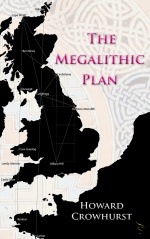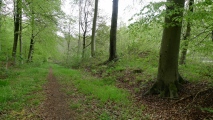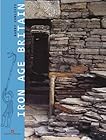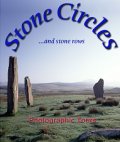<< Our Photo Pages >> Acemhöyük - Ancient Village or Settlement in Turkey
Submitted by AlexHunger on Monday, 26 March 2007 Page Views: 9735
Multi-periodSite Name: Acemhöyük Alternative Name: Acem Hoyuk, Purushanda, BurushattumCountry: Turkey
NOTE: This site is 30.493 km away from the location you searched for.
Type: Ancient Village or Settlement
Nearest Town: Aksaray Nearest Village: Yesilova
Latitude: 38.411400N Longitude: 33.835700E
Condition:
| 5 | Perfect |
| 4 | Almost Perfect |
| 3 | Reasonable but with some damage |
| 2 | Ruined but still recognisable as an ancient site |
| 1 | Pretty much destroyed, possibly visible as crop marks |
| 0 | No data. |
| -1 | Completely destroyed |
| 5 | Superb |
| 4 | Good |
| 3 | Ordinary |
| 2 | Not Good |
| 1 | Awful |
| 0 | No data. |
| 5 | Can be driven to, probably with disabled access |
| 4 | Short walk on a footpath |
| 3 | Requiring a bit more of a walk |
| 2 | A long walk |
| 1 | In the middle of nowhere, a nightmare to find |
| 0 | No data. |
| 5 | co-ordinates taken by GPS or official recorded co-ordinates |
| 4 | co-ordinates scaled from a detailed map |
| 3 | co-ordinates scaled from a bad map |
| 2 | co-ordinates of the nearest village |
| 1 | co-ordinates of the nearest town |
| 0 | no data |
Internal Links:
External Links:
I have visited· I would like to visit
davidmorgan has visited here

Dating from the 3rd millennium BCE, it became an Assyrian trade colony in about 1800 BCE, then later under Hittite control. It was finally abandoned in the 3rd century CE.
You may be viewing yesterday's version of this page. To see the most up to date information please register for a free account.
Do not use the above information on other web sites or publications without permission of the contributor.
Nearby Images from Flickr

The above images may not be of the site on this page, but were taken nearby. They are loaded from Flickr so please click on them for image credits.
Click here to see more info for this site
Nearby sites
Click here to view sites on an interactive map of the areaKey: Red: member's photo, Blue: 3rd party photo, Yellow: other image, Green: no photo - please go there and take one, Grey: site destroyed
Download sites to:
KML (Google Earth)
GPX (GPS waypoints)
CSV (Garmin/Navman)
CSV (Excel)
To unlock full downloads you need to sign up as a Contributory Member. Otherwise downloads are limited to 50 sites.
Turn off the page maps and other distractions
Nearby sites listing. In the following links * = Image available
14.9km ESE 112° Aksaray Museum* Museum
34.8km ESE 102° Musular Ancient Village or Settlement
35.1km E 101° Asikli Hoyuk* Ancient Village or Settlement
45.5km ENE 60° Topak Hoyuk* Ancient Village or Settlement
45.8km ENE 61° Ovaören Mound* Ancient Village or Settlement
47.5km NE 56° Sivasa* Carving
56.9km E 81° Topada* Carving
59.4km ESE 112° Divarli Hoyuk* Ancient Village or Settlement
63.3km ESE 115° Tepecik Çiftlik* Ancient Village or Settlement
64.6km ESE 105° Golludag* Ancient Village or Settlement
71.0km SE 138° Kinik Hoyuk* Ancient Village or Settlement
74.9km NE 46° Karaburna* Carving
77.8km ENE 61° Arapsun* Ancient Village or Settlement
78.5km E 93° Derinkuyu Underground City* Ancient Village or Settlement
79.9km ENE 73° Nevsehir Underground City* Cave or Rock Shelter
80.0km E 86° Kaymakli Underground City* Ancient Village or Settlement
80.1km SW 232° Savatra* Ancient Village or Settlement
82.9km N 11° Malkaya* Carving
86.6km NNE 19° Kirsehir Museum Museum
88.7km ESE 124° Nahita Ancient Village or Settlement
90.1km SSE 158° Eregli Kara Hoyuk Ancient Village or Settlement
90.7km WSW 237° Bozdag Roman Dam* Ancient Mine, Quarry or other Industry
91.7km SE 135° Tyana (Kemerhisar)* Ancient Village or Settlement
92.4km SE 132° Kösk Höyük* Ancient Village or Settlement
92.8km ENE 72° Rock Cones of Urgup (Cappadocia)* Natural Stone / Erratic / Other Natural Feature
View more nearby sites and additional images






 We would like to know more about this location. Please feel free to add a brief description and any relevant information in your own language.
We would like to know more about this location. Please feel free to add a brief description and any relevant information in your own language. Wir möchten mehr über diese Stätte erfahren. Bitte zögern Sie nicht, eine kurze Beschreibung und relevante Informationen in Deutsch hinzuzufügen.
Wir möchten mehr über diese Stätte erfahren. Bitte zögern Sie nicht, eine kurze Beschreibung und relevante Informationen in Deutsch hinzuzufügen. Nous aimerions en savoir encore un peu sur les lieux. S'il vous plaît n'hesitez pas à ajouter une courte description et tous les renseignements pertinents dans votre propre langue.
Nous aimerions en savoir encore un peu sur les lieux. S'il vous plaît n'hesitez pas à ajouter une courte description et tous les renseignements pertinents dans votre propre langue. Quisieramos informarnos un poco más de las lugares. No dude en añadir una breve descripción y otros datos relevantes en su propio idioma.
Quisieramos informarnos un poco más de las lugares. No dude en añadir una breve descripción y otros datos relevantes en su propio idioma.